
|
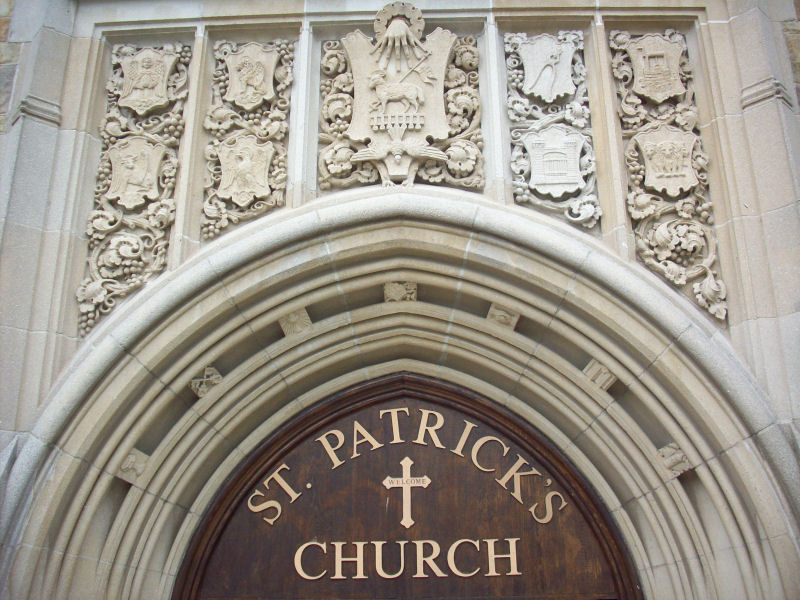
|
|
The front entrance of St. Patrick's Church is more than just an entry way to a building. The many symbols above the doors tell the story of what to expect inside; an encounter with Jesus.
|
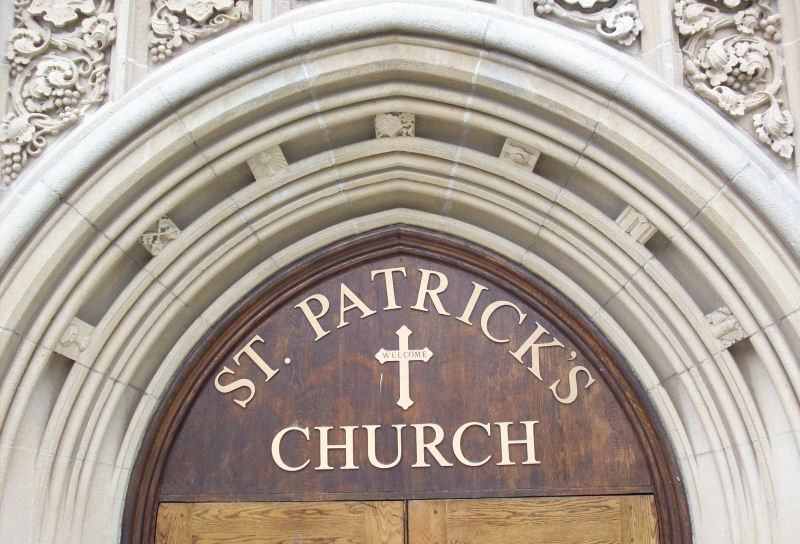
|
|
Directly above the doors are seven symbols representing the seven sacraments. In each sacrament we encounter Jesus.
|
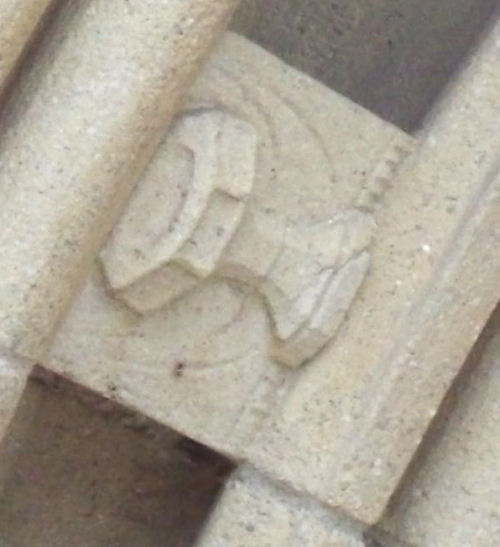
|
This is a picture of a baptismal font. It is through baptism that we die to sin and rise to new life with Christ.
|
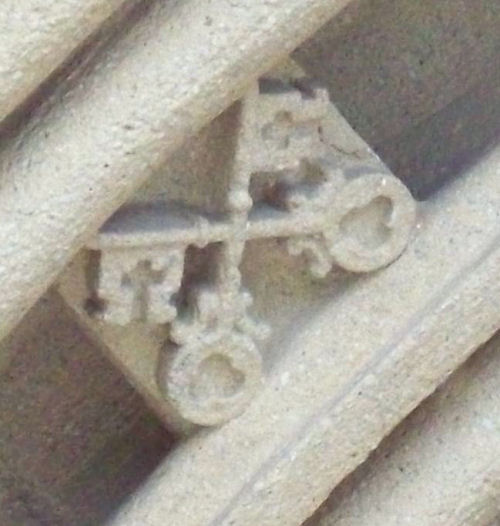
|
In Mt 16:19 Jesus says to Peter I will give you the keys to the kingdom of heaven. Whatever you bind on earth shall be bound in heaven; and whatever you loose on earth shall be loosed in heaven."
|
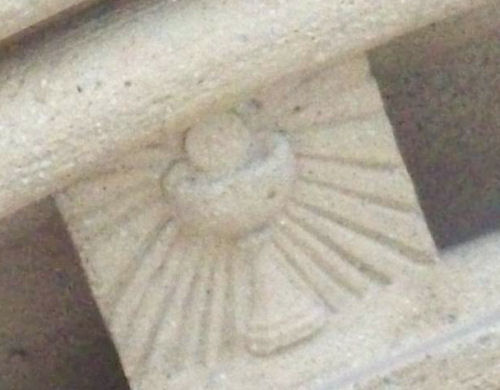
|
The chalice and the host, the wine and bread, are transformed into the Real Presence of Jesus in the sacrament of Eucharist.
|
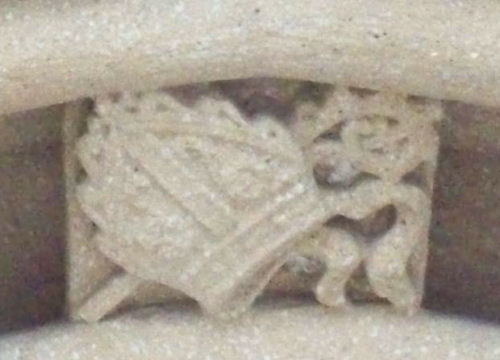
|
Pictured above are the bishop's mitre and crosier,(hat and staff). The bishop confers this sacrament of Christian initiation in which we are sealed with the gifts of the Holy Spirit and are strengthened in our Christian life.
|
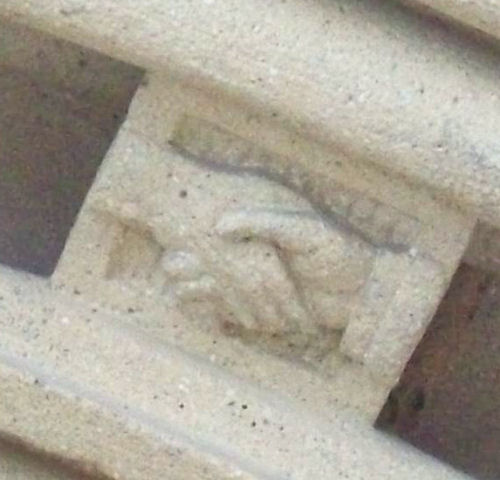
|
In Genesis 2:18 God creates a suitable partner for man. They leave mother and father and the two become one flesh.
|
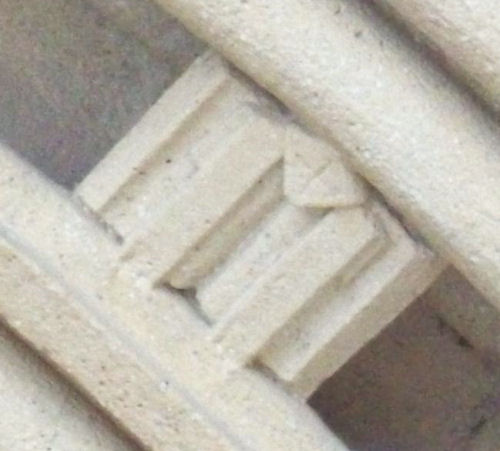
|
The symbols (open Bible and stole) represent Word and Sacrament. The ordained preach the Word and preside at Sacraments.
|
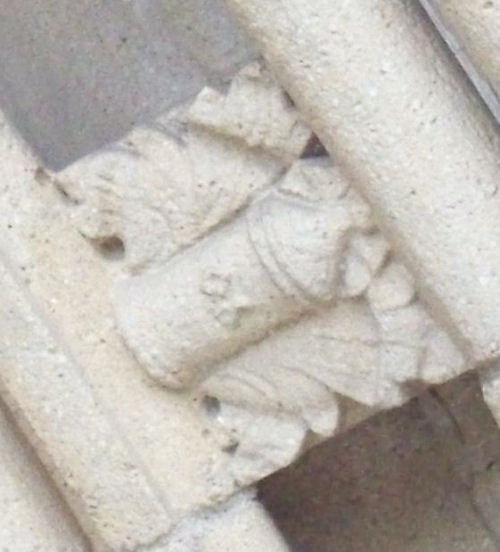
|
Pictured above is a container of holy oil used in the Anointing of the Sick. In this sacrament we experience the Lord's healing touch.
|
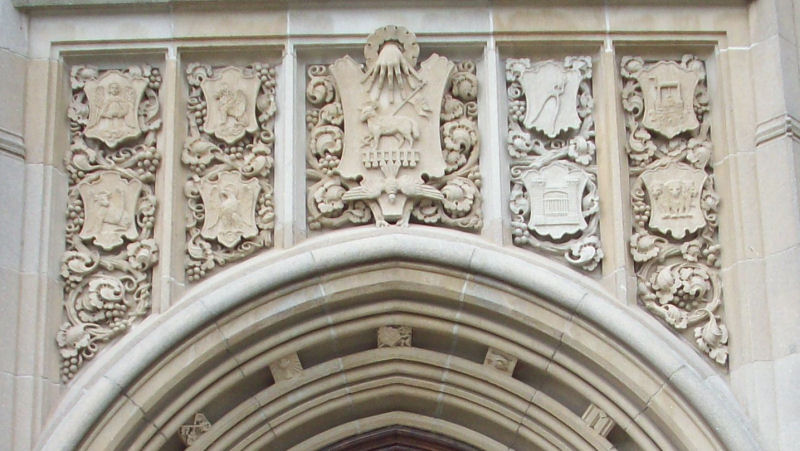
|
|
The four symbols on the left represent the four gospel writers. The four symbols on the right represent the four great Old Testament prophets. Together they tell the story of the Father, Son, and Holy Spirit pictured in the center.
|
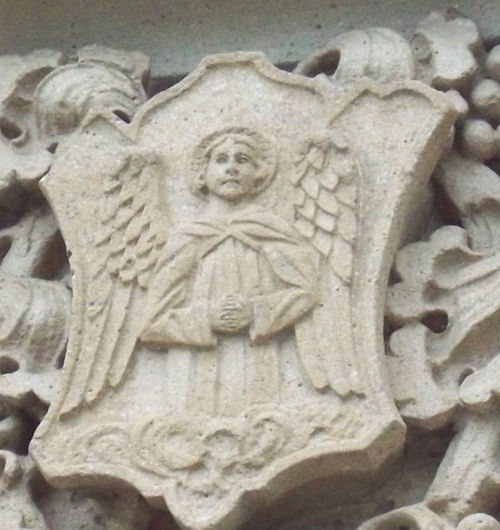
|
The winged man is a symbol of St. Matthew because he began his gospel with a genealogy of Jesus. The figure of the winged man is taken from the vision of Ezekiel of four "living creatures". "The book of the genealogy of Jesus Christ, son of David, the son of Abraham." Mt 1:1
|
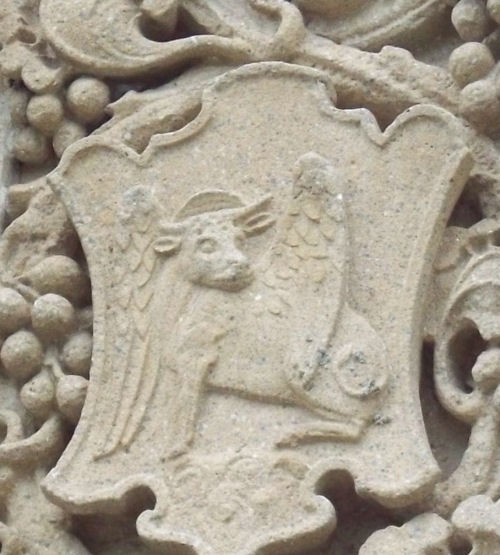
|
A winged ox is a symbol St. Luke because of his emphasis on Jesus' sacrificial atonement. The beginning of his gospel starts with Zechariah offering sacrifice. Oxen were often used in sacrifice.
|
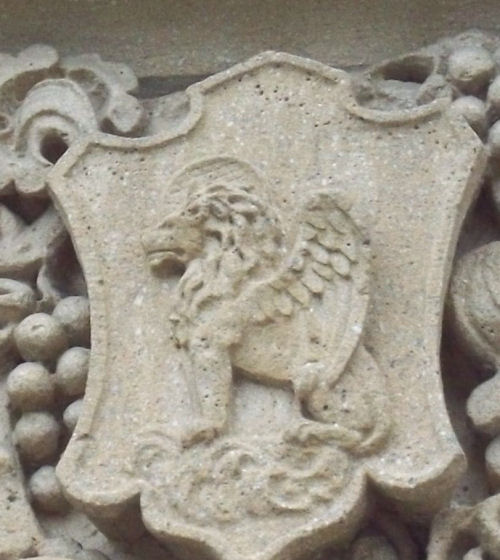
|
A winged lion is a symbol of St. Mark the Evangelist because of his clear proclamation of the coming of the Kingdom of God when he was in the desert. The lion is a symbol of the desert. "Behold I am sending my messenger ahead of you; he will prepare your way. A voice like one crying out in the desert: 'Prepare the way of the Lord, make straight his paths.'" Mk1:2-3
|
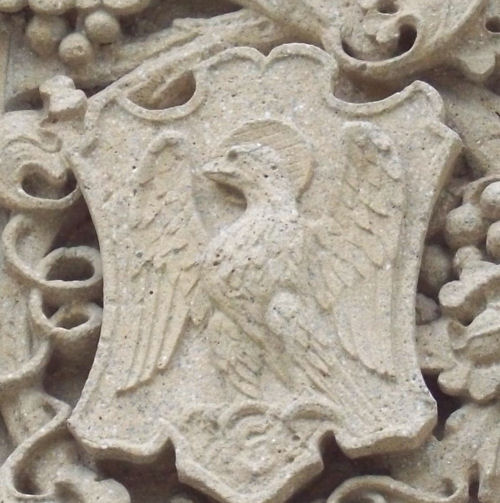
|
The eagle is a symbol of St. John the Evangelist because of his "soaring" witness to Jesus' divine nature which is evident in the beginning of his gospel. "In the beginning was the Word, and the Word was with God, and the Word was God." Jn 1:1
|
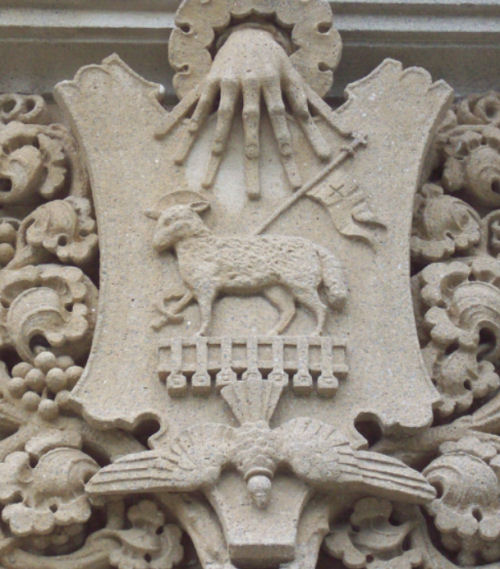
|
The three symbols represent the Trinity
The hand of God (Manus Dei) is used as a symbol of God the Father. It was virtually the only symbol for God used during the first eight centuries of the church. The hand symbolizes God's ownership of and providence for all of creation, and comes from the many references to the "hand of God" in the Bible.
Standing with a banner, the Agnus Dei (Lamb of God) represents the risen Christ who triumphs over death. John the Baptist proclaimed Jesus to be the Lamb of God who takes away the sin of the world. In the Book of Revelation, Jesus is portrayed as a lamb.
The dove is a symbol of the Holy Spirit. It is taken from the story of Jesus' baptism, where the Spirit descended on him in the form of a dove.
|
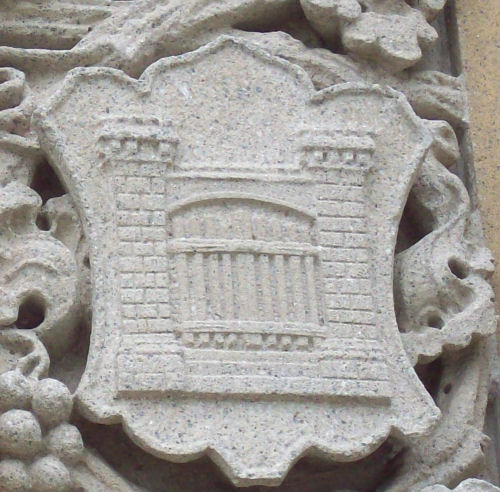
|
The closed gate is a symbol of the prophet Ezekiel. In chapter 44 verse two Ezekiel says" This gate shall be kept shut; it must not be opened." This is seen as a reference to the virgin birth and the Incarnation. The incarnation tells of the Divine taking human flesh which we celebrate at the Eucharistic liturgy.
|
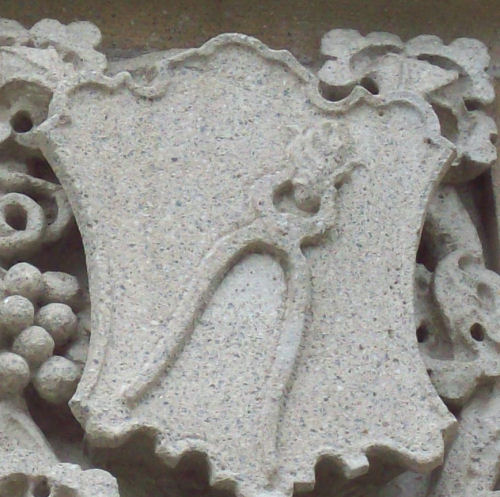
|
The pincer with a burning coal is a symbol of the prophet Isaiah and comes from his call to be a prophet in chapter 6. Isaiah is taken to heaven and is asked by God to be a prophet to which Isaiah responds that his lips are unclean. An angel takes a burning coal and purifies Isaiah's lips. Isaiah speaks of the coming of Christ through the prophecy of the virgin birth and the seed from the rod of Jesse. It is this Jesus that Isaiah speaks of that makes us clean from sin.
|
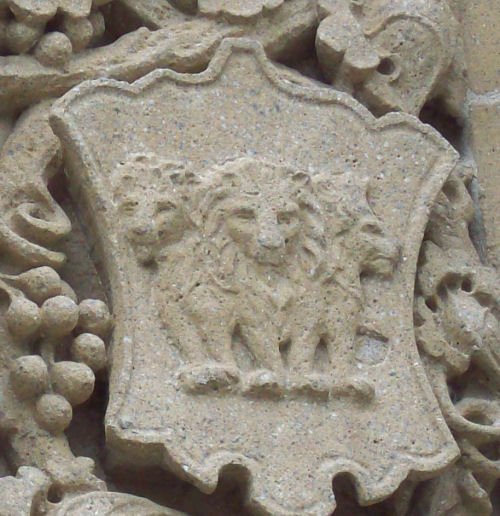
|
The three lions are a symbol of the prophet Daniel. In chapter six, Daniel is thrown into the lion's den because he refused to follow a religious edict from the Persian King. Daniel was saved by God from this gruesome death. Daniel goes on to see "one like the Son of Man descending and ascending" which is taken as a reference to Jesus. The phrase "Son of Man" is used often in the gospels. God saves us through Jesus Christ.
|
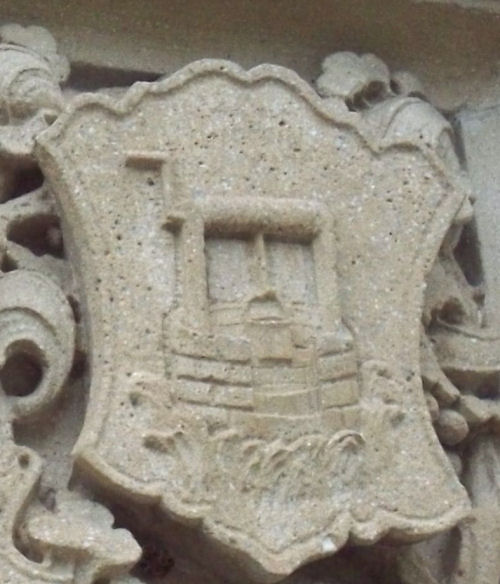
|
He was a very vocal prophet who encountered many obstacles and suffering in his lifetime. He told the people to repent from their low moral life and predicted the Babylonian exile. He also preached of God's great mercy. After prophesying to the people Jeremiah was thrown into a well like the one pictured in stone. Jeremiah sunk into mud up to his neck for several days until he was rescued.
|

|
|
The angels of prayer and praise are located below the figure of St. Patrick and above the symbols of the Old Testament prophets and the Gospel writers. Psalm 148 is a hymn inviting the beings of heaven (Ps 148:1–6) and of earth (Ps 148:7–14) to praise God. We are called to pray and praise God with the angels.
|

|